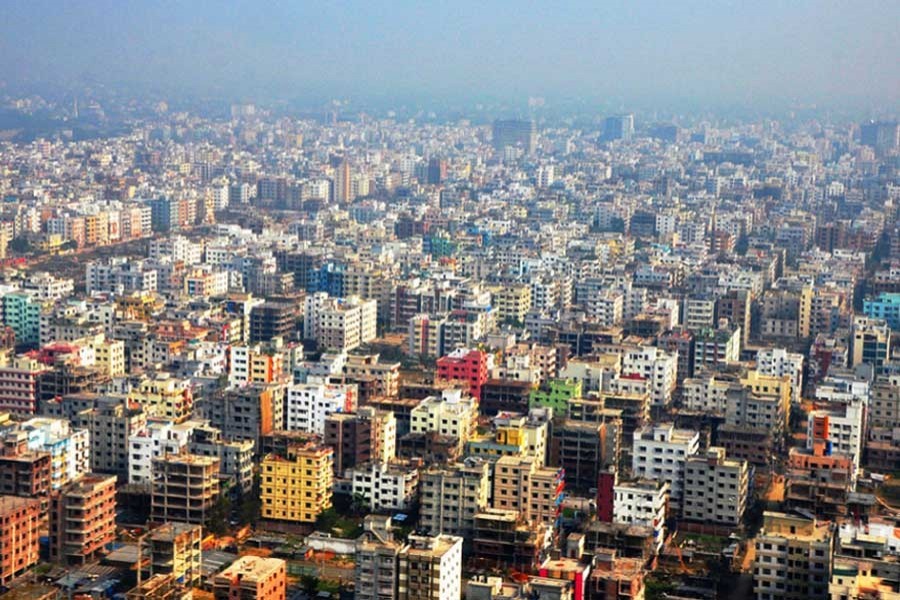The floor area ratio (FAR) included in the Building Construction Rules 2008 is abnormally high, making it difficult to control population density in Dhaka, urban experts said.
They also said the planning authority should work to protect collective interest and ensure livability of the city, not to serve the interest of any individual or vested group.
They pointed out that the Rajdhani Unnayan Kartripakkha (Rajuk) should be free of political pressure and bureaucratic tangle to serve the interest of the citizens.
The experts made the observations at a press briefing on 'Detailed Area Plan (DAP) report' at the Bangladesh Institute of Planners (BIP) auditorium in the city on Wednesday.
The floor area ratio is the relationship between the total amount of usable floor area that a building has, or has been permitted to have, and the total area of the lot on which the building stands. A higher ratio would likely indicate a dense of urban construction.
Giving a presentation, BIP secretary Prof Adil Mohammed Khan said that density zoning has been incorporated in the revised DAP in details for the first time which is very positive.
"Globally, a major tool for density planning is height zoning. Inclusion of floor area ratio (FAR) in the Building Construction Rules 2008 has failed as the value of FAR is so high compared to other countries. In developed countries, the FAR value ranges between two and three while it ranges between 3.15 and 6.5 in Bangladesh," he said.
In Singapore, high rises are constructed in blocks, the area of which is huge. High rises are not constructed in small plots like in Bangladesh, he said, adding that the dwelling unit number should be specified in the present DAP to control population density.
FAR has failed in Dhaka as the monitoring system is very weak and there is no area-wise variation in FAR value, said Prof Adil.
He also said that there should be high penalty provision in the DAP in case of illegal land conversion. The penalty amount against the benefit should be so high that no one dares to legalise illegal work.
Besides, the DAP should restrict random housing projects by land developers without calculating existing residential demand as there is housing zones specified in the DAP, he added.
Prof Adil said there was provision of mixed use in the previous DAP (30 per cent to 50 per cent in a building), which is very high. In the present DAP, the mixed use ratio should be lowered, he added.
BIP president Prof Akter Mahmud said the random mixed use which has been mentioned in the present DAP must be limited.
There should be no compromise regarding flood flow zones; transfer of development rights (TDR) should be specified and the issue of water retention pond preservation should be consistent with the drainage master plan, he added.
Fazle Reza Sumon, former vice-president of BIP, said the height restriction for density control has been enforced in Dhaka since long and it was successful from the planning perspective. But the population density went beyond control after introduction of FAR in the Building Construction Rules 2008.


